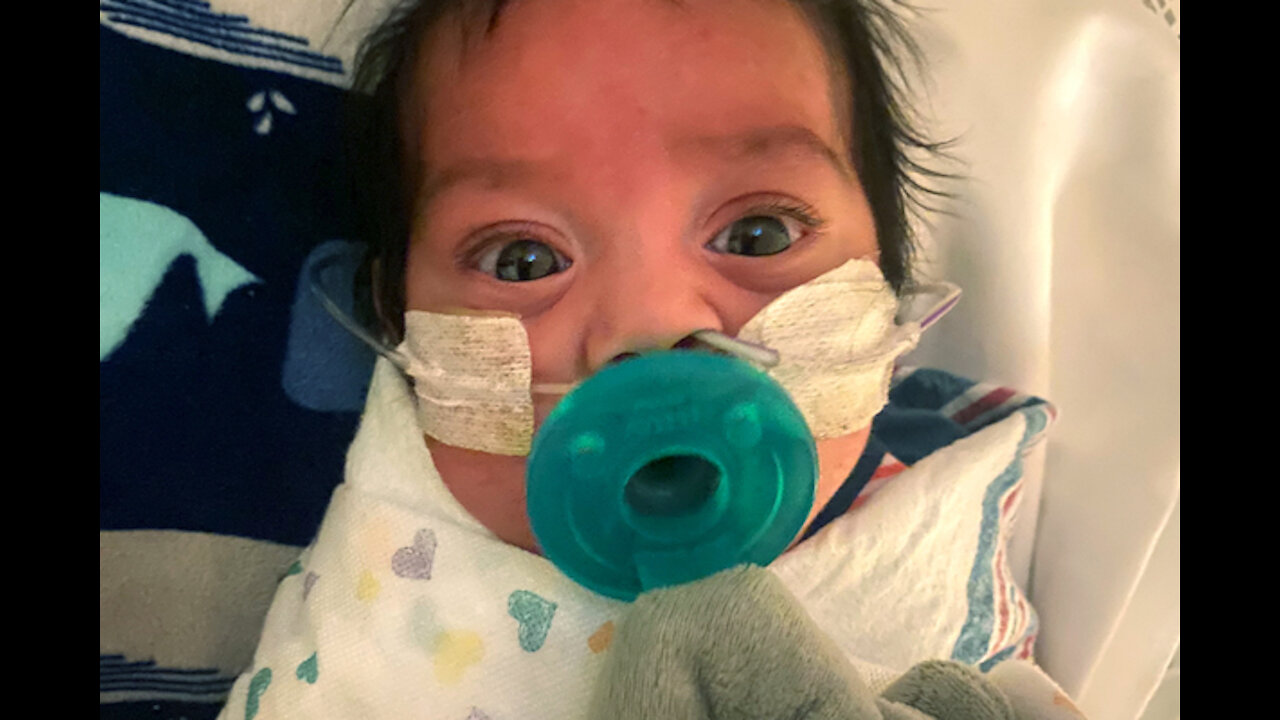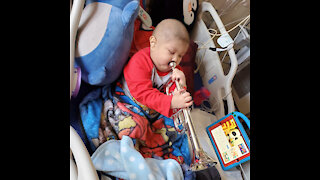Premium Only Content

Corey Chambers Real Estate Newsletter April 2021 SoCal Home
Your Referrals Help the Kids
Here Comes the Tax Man. And Here Comes a Tax Break:
TAX Day Delay!! IRS extends tax deadline to May 17, 2021. I recently read where we were working Jan. 1 through June 30th of each year, just to pay all of our taxes. In Canada, add another month or two. After that, you keep all you make. Prior to that, 100% goes to the government in some form or fashion to pay for some kind of government worker, work program, social program, defense, project, health care, common good, common projects, emergency bailouts etc. Whatever you want to call it, April 15th is usually TAX day; the deadline for filing your federal in-come taxes in the U.S.A. But not this year. #coreychambers #realestate #news
So, in celebration of this special time of year, let’s talk TAX relief. If you received last month’s letter from me, you will recall our goal of trying to raise $25,000.00 for Children’s Hospital Los Angeles, the areas #1 Not for Profit Hospital for Young People. But – we need your help and I believe you can benefit from the TAX relief as well. #chla #referralshelpkids Just down the street from where I am typing this, CHLA has a full house of kids fighting for their lives. For them and their parents’ taxes are not “top of mind”, health is. Living is. Surviving is. As you may have heard, Children’s Hospital is front and center in the fight against nasty diseases that destroy or cut short the lives of Children. Things like Cancer, Non-Hodgkin’s Lymphoma, Leukemia, as well as leading the way in early diagnosis of autism and miracle working around spinal cord injuries. We are thankful to have such a wonderful facility close by, doing such great work to help heal and save young people. | Blog Video
So even though we are trying to figure out how much we owe the tax man, many are simply hoping they can be here to actually pay taxes. This is why we here at the Corey Chambers Team have resolved to do what we can to help.
For every house we sell this year, we are donating a portion of our income to Children’s Hospital Los Angeles. Our goal, again, is to raise $25,000 to help them in their quest to Heal, Save, Cure and Comfort Children under their care.This is where we need your help and how you can benefit at the same time…
Charitable contributions are tax deductible to a point. Rather than give your money to the government, you should consider making a donation to a charity. I believe it will somehow come back to you, well beyond a simple tax deduction. A core value at our company is “the size of the hole you give through is directly proportionate to the size of the hole you receive through.” Either way, your referrals are in good hands and help us contribute to a good cause. Life moves fast for some and we are eager to make the Home Selling and Buying experience a smooth rewarding one. Over the last two decades of helping thousands of families sell their home and/or buy another, we have met some wonderful, loving, caring people. People like you! So, your referrals, those you know considering a move, that we help – you can rest assured that not only will they get the award-winning service we are known for, but that a solid portion of the income we receive from the transaction will go toward a very worthy cause. It’s easy to refer those you know considering buying or selling a home. Here are the options again: 1. You can go to www.ReferralsHelpKids.com and enter their contact info on line or forward the link to who you know considering a move. 2. Of course you can always call me direct as well at 213-880-9910.
Why I support Children’s Hospital Los Angeles
I grew up right here in the Greater Los Angeles Area, born in Los Angeles County at St. Francis Hospital. I remember when I first heard about a young person close to our family suffering from a nasty disease and getting treated for that at Children’s Hospital Los Angeles. It was then that I began to pay closer attention to the work they do at that hospital. Since then, I have learned that it is a collection of hard-working healthcare professionals, most making their home right here in the Los Angeles area, all coming together for a common cause. That cause is to help young people overcome unfortunate health issues that life sometimes throws our way. Being a Los Angeles Area California native, I take pride in supporting in a way that I can the good work these people do at Children’s. My team rallys around our annual goal or raising money and donating portions of our income to help Children’s in their quest to heal young people when they need healing. My team and I are committed to providing outstanding results for buyers and sellers referred to us by our past clients. I have discovered that Children’s Hospital Los Angeles shares similar commitment to their patients. And since their services survive on sponsorships and donations, we are happy to contribute and proud to support them.
Sincerely,
P.S. The story of this young person enclosed may cause you to look at your loved ones differently. It did me. Check it out.
It’s easy to refer those you know considering buying or selling a home. Here are the Options Again: Enter their contact information at www.ReferralsHelpKids.com, call me direct or pass my number on: 213-880-9910.
Contact Us
Your Home Sold GUARANTEED or I’ll Buy It*
Corey Chambers Team
200 N San Fernando Rd #119, Los Angeles, CA 90031
(213) 880-9910
coreychambers@yahoo.com
Visit us on the web at www.ReferralsHelpKids.com
A Pair of Daring Heart Procedures Save Preemie Alex’s Life
Combining expertise with ingenuity, a team of cardiovascular specialists fixes a rare birth defect in a premature baby.
Noa stood at the starting line, slightly crouched down, right foot in front of the left. He was so nervous, he was shaking. — By Jeff Weinstock
Sarah Badran, MD, knows her audience. “Let me know if I lose you, all right?” she says.
An interventional cardiologist at Children’s Hospital Los Angeles, Dr. Badran starts into a plainspoken description of blood circulation that she keeps for the layperson, whether an anxious parent or an easily baffled writer.
She calls on it here to illustrate the birth defect that led her to perform a virtually unprecedented cardiac catheterization procedure on tiny Alex, born Oct. 26, 2020, at 26 weeks with his lungs unattached to his heart, creating a disrupted blood flow that threatened his life.
She begins with a familiar association to explain how one’s blood moves oxygen from the lungs out to the body: “The blood is like an Uber driver,” Dr. Badran says. By the time she finishes, Alex’s disorder is understood and ready for retelling.
In normal circulation, the lungs load the blood with oxygen and send it through the pulmonary veins to the heart’s left atrium, and then out to the body’s organs through the aorta. Then depleted of oxygen, the blood returns to the right side of the heart before getting pumped back into the lungs, and the whole circuit repeats. Before birth, this exchange is formed anatomically, as the pulmonary veins become anchored to the back of the left side of the heart.
In rare instances—1 in 10,000 births—that attachment doesn’t develop. The pulmonary veins “just get lost,” Dr. Badran says, draining the blood out elsewhere within the body and leaving it without any road back to the heart, a birth defect called total anomalous pulmonary venous return (TAPVR).
“What generally happens is, you have a beautiful little baby, they’re born, and then they turn completely blue. That’s usually a big, big emergency.”
To the liver and back
The condition is not easy to see on a prenatal scan because fetal circulation doesn’t involve the still-developing lungs, but instead draws oxygen from the mother’s placenta, so blood flow tends to appear fine.
Alex’s abnormality wasn’t discovered until a week after he was born, when his breath began to grow short. An echocardiogram revealed he had TAPVR and that his pulmonary veins were depositing blood into his liver. The diagnosis got him transferred to Children’s Hospital Los Angeles.
Alex’s blood, however, was managing to return to his heart through a blood vessel located in the liver called the ductus venosus. The same vessel is employed in utero, though that’s by nature’s design, as it passes oxygenated blood to the heart after receiving it from the umbilical vein, which extends out of the placenta. Shortly after birth, that ductus venosus typically closes off and a new breathing apparatus, led by the lungs, takes over.
The irregularities caused by prematurity may have saved Alex, as his ductus stayed partially open, allowing blood to stream through it and reach his heart. Once there, the blood would pass from the right to left chamber through a hole called the patent foramen ovale, and then, freshly oxygenated, flow out to the body.
“It was a wackadoodle circulation,” Dr. Badran says, “but that’s how he was staying alive.”
The one chance to save him
That passage through the ductus venosus, however, was on its way to sealing shut, so some intervention had to be made. Dr. Badran and her colleague in CHLA’s Heart Institute, Neil Patel, MD, discussed next steps with cardiothoracic surgeon John Cleveland, MD, who would do the open-heart surgery that Alex needed to fix his congenital defect. They agreed that the operation was too risky for a baby so unstable.
The safer option was to wait until Alex developed more, as close to full term as they could get him, before Dr. Cleveland would operate. In the interim, the plan was for Dr. Badran and Dr. Patel to put a stent into the ductus venosus to keep it open so it would continue to convey blood to Alex’s heart.
That decision meant Dr. Badran and Dr. Patel were faced with trying something that, according to Dr. Cleveland, had only been done a handful of times worldwide, and never at Children’s Hospital: stenting a ductus venosus in a premature baby. The procedure is so unusual because TAPVR, as uncommon as it is across all births, is hardly ever reported in preemies.
Dr. Badran and Dr. Patel were unfazed. They were confident they could apply fundamental techniques and their accumulated expertise to an entirely new predicament.
“The thing about pediatric interventional cardiology is that it’s always like that,” Dr. Badran says. “Everything is so rare we’re always kind of engineering our way through these types of situations. I know everything I need to know about premature babies, and I teach embryology in med school. I know everything there is to know about the ductus venosus system, blood flow, and what the vessels are like, how they’re shaped, and why they close and why they open.
“The only chance to save Alex was to try to stent this open, which would not be fixing the problem. It would just basically be making it like he hadn’t been born yet.”
The day after the determination was made to try to install a stent, Alex’s blood pressure and oxygen levels began to fall, signs the ductus venosus was closing. The doctors were compelled to move Alex, only 17 days old, into the catheterization lab. Dr. Badran recounts the delicacy of the procedure—and exults over its success.
“To take this tiny little person,” she says, “and put an IV in his neck vein and try to find this threadlike thing, thinner than a wire—we almost couldn’t find it—then stretch it with a balloon and put a stent in—it was a technical tour de force. It worked, and it stabilized him.”
Restoring the anatomy
He was stabilized but not safe, and would spend the next several weeks watched by neonatologist Jennifer Shepherd, MD, in the Steven & Alexandra Cohen Foundation Newborn and Infant Critical Care Unit. “When I heard we were getting a baby who was 26 weeks with obstructed infradiaphragmatic TAPVR,” she says, “my first thought was, how are we going to keep him alive? It just was unheard of.”
As they worked to maintain Alex’s circulation until he reached an age and a weight suitable for surgery, Dr. Shepherd and her team had to respond to any unfavorable movement in his oxygen levels or blood tests. “We had a very low threshold to get echocardiograms to make sure that stent was still open.”
Alex made it to 37 weeks in gestational age, but not without needing more time in the cath lab to keep the stented area from closing. At 37 weeks, imaging showed the ductus venosus was again narrowing, so on Jan. 5, Dr. Cleveland brought Alex to the operating room to establish a connection between his lungs and heart. Though Dr. Cleveland had done the procedure often, Alex’s size—still only 4 pounds—added to the risk.
“Repair of total anomalous pulmonary venous return is a routine operation; we probably see six or seven cases a year,” he says. “There’s just less room for error when children are that small.”
With Alex on the bypass machine and his body cooled to about 65 degrees Fahrenheit, Dr. Cleveland removed his heart from his chest and began the repair. He tied off what he calls the “anomalous pathway,” the ductus venosus that had kept Alex’s blood flowing, then sewed the pulmonary veins to the back of the left atrium, where they should have originally attached. He set Alex’s heart back into his chest, warmed his body up and returned him to intensive care.
“Everything went well,” Dr. Cleveland says. “The goal of the operation was to restore normal anatomy, which we did.”
Follow-up scans have all looked good. With Dr. Patel staying on as Alex’s cardiologist, Dr. Cleveland expects his work has ended. “He’ll get echocardiograms because that’s part of the deal, but this should be the only heart operation he needs for this condition.”
It’s not often that open-heart surgery on a newborn is the postscript, but while it culminated Alex’s heart repair, from all accounts what set it apart was the opening act. Stenting the ductus venosus on a preemie that small was not merely delicate but untried.
“From my review of the literature, nobody else in California had done it,” Dr. Cleveland says. “I think it was a California first.”
While exhilarated by the achievement, Dr. Badran saves her strongest, lengthiest accolades for the efforts of the anesthesiologists and the neonatologists and other support staff, “the village that it took,” she says, to keep Alex intact so she and Dr. Patel could do their work.
“To transport such a tiny baby, that sick, get him safely on the cath lab table without dislodging the breathing tube, and give him the right medications, and the way the nurses and the techs all coordinated, and hospital maintenance heating up the cath lab to 82 degrees to make sure he wouldn’t get cold—they somehow managed to keep him alive while we found that vein.
“We had stented tiny things on lots of babies, getting into small little blood vessels and opening them, but the amount of cooperation and collaboration between all the divisions, it was just a beautiful orchestration of teamwork.”
Article and photos courtesy Children’s Hospital Los Angeles
How you can help:
Refer your friends, neighbors, associates or family members considering making a move:
www.ReferralsHelpKids.com or call Corey at 213-880-9910.
LOFT & CONDO LISTINGS DOWNTOWN LA [MAP]
Lofts For Sale
Map Homes For Sale Los Angeles
SEARCH LOFTS FOR SALE Affordable | Popular | Luxury | Sold Browse by Building | Neighborhood | Size | Bedrooms | Pets | Parking
Copyright © This free information provided courtesy L.A. Loft Blog and LAcondoInfo.com with information provided by Corey Chambers, Realty Source Inc, BRE#01889449 We are not associated with the homeowner’s association or developer. For more information, contact (213) 880-9910 or visit LAcondoInfo.com Licensed in California. All information provided is deemed reliable but is not guaranteed and should be independently verified. Properties subject to prior sale or rental. This is not a solicitation if buyer or seller is already under contract with another broker.
-
 4:56
4:56
Corey Chambers
3 years ago $0.01 earnedCorey Chambers Bitcoin
189 -
 4:59
4:59
Corey Chambers
3 years agoCorey Chambers Real Estate Newsletter March 2021 SoCal Home
2121 -
 5:00
5:00
Corey Chambers
4 years ago $0.01 earnedCorey Chambers Real Estate Newsletter February 2021 SoCal Home
356 -
 5:00
5:00
Corey Chambers
4 years ago $0.02 earnedCorey Chambers Los Angeles Real Estate Newsletter December 2020 SoCal Home
268 -
 2:59
2:59
WSYM
3 years agoInspired Home Real Estate - 3/4/21
20 -
 2:57
2:57
WSYM
3 years agoInspired Home Real Estate & Staging - 4/8/21
7 -
 0:34
0:34
One America News Network
3 years agoReal America: Tonight April 9, 2021
1.08K6 -
 0:34
0:34
One America News Network
3 years agoReal America: Tonight April 7, 2021
1.77K2 -
 0:34
0:34
One America News Network
3 years agoReal America: Tonight April 8, 2021
1.56K2 -
 2:59
2:59
WSYM
4 years agoInspired Home Real Estate - 2/9/21
17